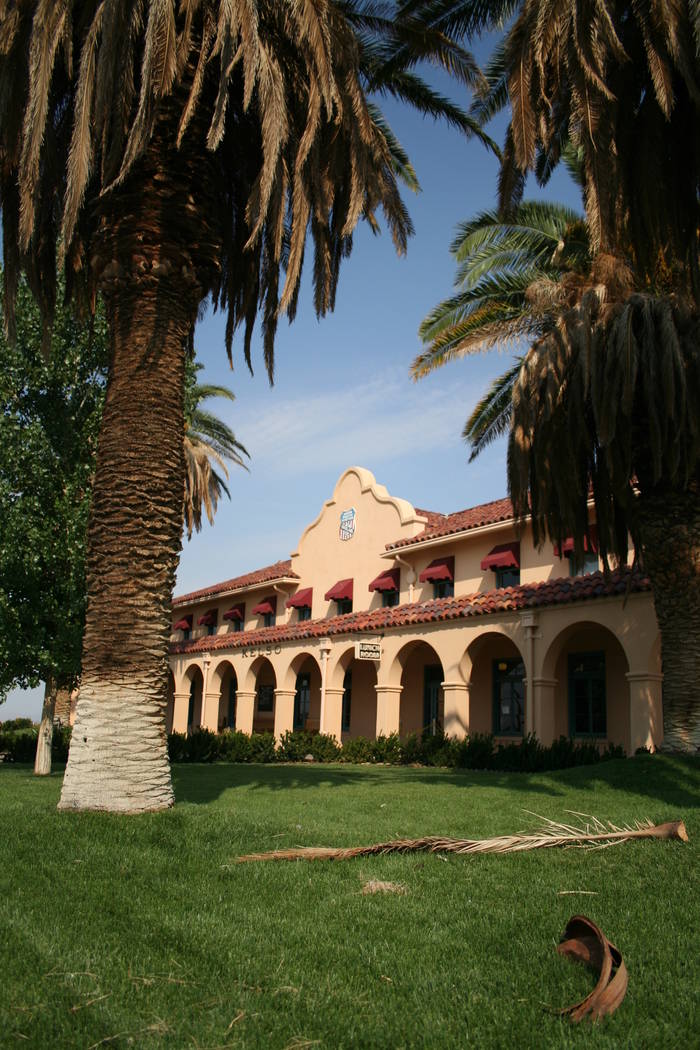Mojave National Preserve is a great day trip for Las Vegans
If you are yearning for a desert road trip before the hot weather sets in, consider Kelso Depot in California’s Mojave National Preserve. At a little over 100 miles southwest of Las Vegas, it’s an easy day trip.
Kelso Depot was a railroad station until the 1980s. It’s been beautifully and carefully restored, a gem from the days when railroads were “the only worthwhile way to travel.” Today the structure is the park’s main visitor center and museum.
Opened in 1924, the Kelso Depot was constructed in the Spanish Mission Revival style, the signature architecture used by the Union Pacific for important buildings along its main route from Los Angeles to Las Vegas and Salt Lake City. The building had a restaurant, a conductor’s room, telegraph office, baggage room, library and dormitory rooms for railroad workers.
Kelso was a busy town in the mid-1940s, with a population that some say reached 2,000 people. Trains stopped there on a regular basis, and the area’s Vulcan iron mine was still in operation. Once mining ended and diesel engines replaced steam, workers and their families moved on.
The main functions of the depot shut down in 1962, but the boarding rooms and restaurant remained open. By 1985, those services were no longer essential, and because of liability issues and potential vandalism, the Union Pacific closed the depot’s doors.
It was scheduled to be demolished, but a group of citizens organized the Kelso Depot Fund. This enterprising group prevented the razing but didn’t have the funds to restore the depot. The group appealed to the federal government and local politicians. The Bureau of Land Management managed most of the lands around it, as the East Mojave National Scenic Area, and by 1992, the BLM took title of the building.
After the California Desert Protection Act passed in 1994, this area became the Mojave National Preserve, putting the building into the hands of the National Park Service. Renovations began, and in October 2005, it was reopened to the public in all its former glory — and then some.
Besides the railroad history, there are exhibits on ranching, mining and the Chemehuevi and Mojave Native Americans, who lived in this region. It’s worth at least an hour of your time to watch the preserve’s orientation film and a self-guided tour of the depot.
Trains don’t stop here anymore, but you can see them whiz by about once an hour, separated from visitors by a safety fence. They still pass by so close their presence thrills. Even if you don’t hear the whistle blowing or see the locomotive coming, when you’re in the depot you can feel the vibrations.
The park encompasses 1.6 million acres, and it’s quite diverse because of the elevation differences throughout. The depot is at an elevation of 2,194 feet, so expect temperatures to be about the same or a few degrees cooler than in Las Vegas. Other areas of the park could be warmer or even very cold. Near Baker, California, the park’s elevation is about 800 feet, yet it rises up to 7,929 feet at Clark Mountains Summit, in the northernmost section.
Wildflowers bloom as early as March in the park’s lower elevations.
Though it’s easy to visit the depot in a single day, there is enough to do in its surroundings to invest several days camping and exploring. Near the depot are the Kelso Dunes, a magnificently large and beautiful sand pile. The world’s largest forest of Joshua trees lies along Cima Road, between the depot and Interstate 15. Hole-in-the-Wall has a pleasant campground, which is usually uncrowded, and a great place for stargazing and hiking.
There are no services in the park, so be sure to fill up your gas tank before you head out and bring plenty of water and food. Also, cell service is sporadic and there is no public Wi-Fi. Since the Kelso Depot Visitor Center is located more than halfway through the park, download and print a map before you set out.
If you go
Where: Kelso Depot in the Mojave National Preserve in California
When: Depot is open from 10 a.m. to 5 p.m. Thursdays through Mondays; preserve is open 24/7
Information: nps.gov/moja, 760-252-6100


























